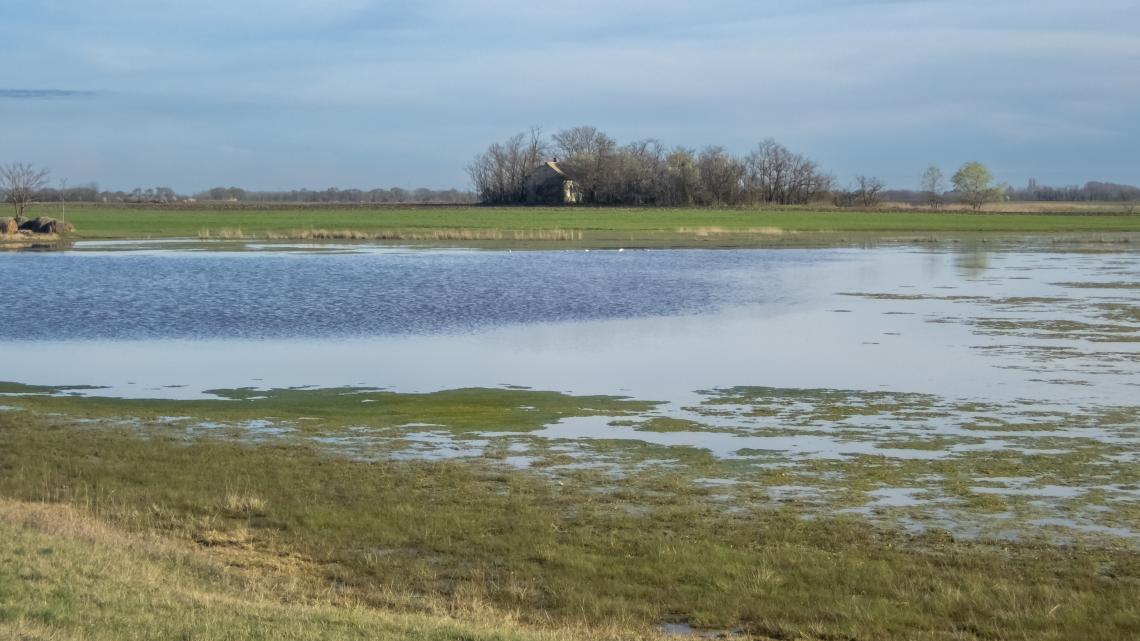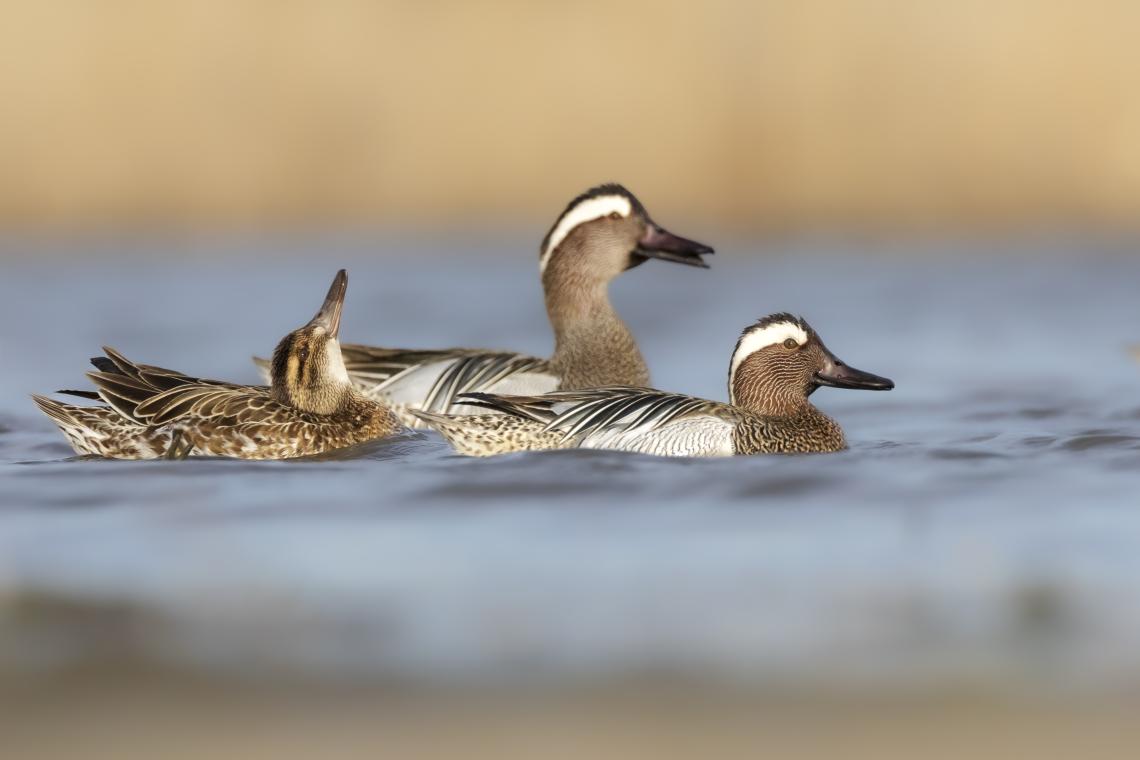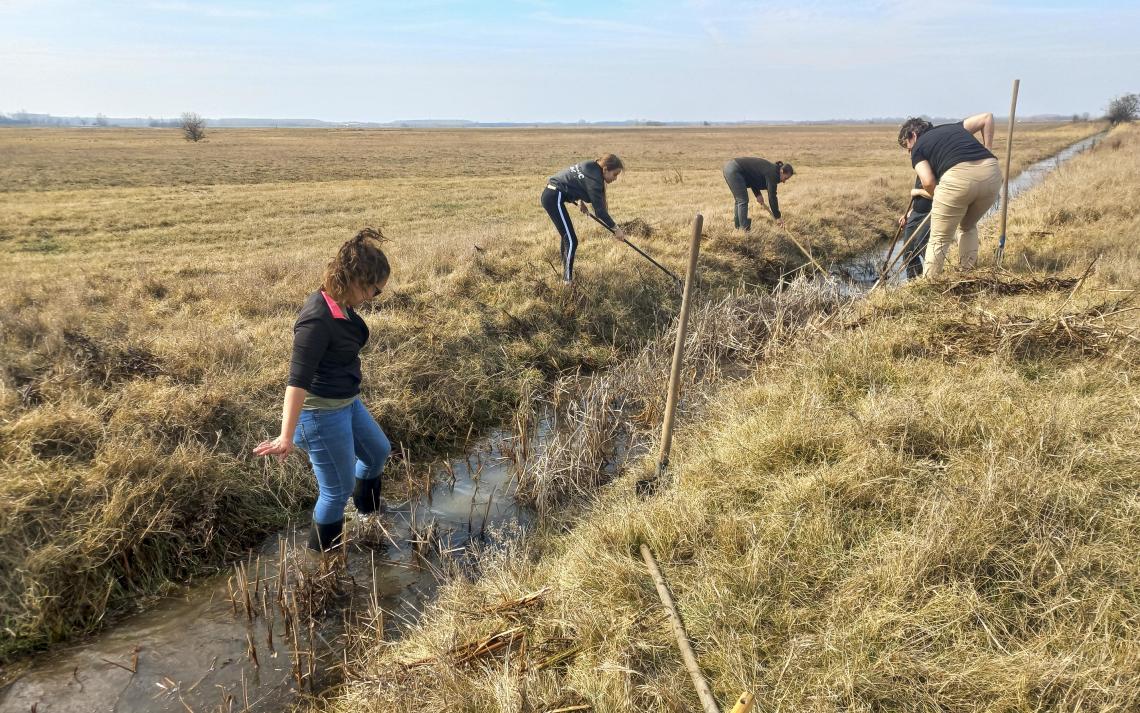Vizes élőhelyek felmérése a Dél-Alföldön
Elkezdődött a vizes élőhelyek dél-alföldi felmérése a GRASSLANDBIRDS (HUSRB/23S/12/043), a Magyarország-Szerbia Interreg program támogatásával zajló természetvédelmi és ismeretterjesztési projekt keretei között.
A klímaváltozás és a humán hatások (folyószabályozások, mocsarak lecsapolása, belvízlevezető csatorna-rendszer létesítése) miatt az Alföld vízrendszere súlyosan veszélyeztetett állapotban van.

A „Pannon szikes gyepek és mocsarak” az EU prioritás élőhelyei közé tartozik, egyike a legunikálisabb és legveszélyezettebb élőhelyeknek.

A projekt terület nagyon értékes része a Tisza mellett található szikes tavak és mocsarak rendszere, amely a határ mindkét oldalán megtalálható.
Az itt előforduló specialista madárfajok nagyon jó indikátorok is egyben.
A nagy goda (Limosa limosa) hazánk kihalással fenyegetett faja, állománynagysága már a 100 párat sem éri el.
A piroslábú cankó (Tringa totanus) mindössze rigó méretű, az egyetlen mocsaras réteken, szikes tavak mellett fészkelő hazai fészkelő cankófajunk. Régebben nagyon gyakori volt az összes, akár kisebb vízfoltok mellett megtelepedett, de a klímaváltozással járó aszály és kritikus élőhely-vesztés miatt állománya nagyon visszaszorult a Kárpát-medencében is.

A böjti réce (Anas querquedula) tipikusan a kisebb állóvizek, mocsarak rejtőzködő költőfaja, állománynagysága az elmúlt években csökkenő tendenciát mutat.

A még meglévő, kisebb-nagyobb vizes területek felmérése egyik fő célja a projektnek, az itt költő és átvonuló madárfajok felmérése mellett.
A felmérés március első napjaiban indult el, az önkéntesek a felmérés mellett egy gyakorlati terepi munkában is részt vettek. A Csongrád megyei Baksi-pusztán, valaha belvízlevezetésre épült, azonban jelenleg a pusztában található depressziók feltöltésére szolgáló csatorna vízhozamát növelték olyan módon, hogy kitakarították a felhalmozódott szerves anyagtól a csatorna bizonyos pontokon mélyítésre és szélesítésre került.

A munka az MME és a pusztaszeri Vackor Környezetvédelmi és Természetvédelmi Egyesület önkéntesei segítségével lett megvalósítva.

Survey of wetland habitats in the Southern Great Plain
The survey of wetlands in the Southern Great Plain has begun as part of the GRASSLANDBIRDS (HUSRB/23S/12/043) nature conservation and awareness-raising project, supported by the Hungary-Serbia Interreg programme
Due to climate change and human impacts (river regulations, drainage of marshes, and the establishment of inland water drainage systems), the Great Plains' water system is critically endangered.
The "Pannonian salt steppes and marshes" are among the EU's priority habitats, making them one of the most unique and threatened ecosystems.
The project area's most valuable asset is the network of saline lakes and marshes located along the Tisza River, which extends on both sides of the border.
The specialist bird species in this area serve as excellent indicators of habitat health.
The black-tailed godwit (Limosa limosa) is a critically endangered species in Hungary. Its population is now below 100 breeding pairs.
The Common redshank (Tringa totanus), a bird no larger than a thrush, is the only sandpiper species in Hungary that nests in marshy meadows and around saline lakes. It was once widespread, even around small water bodies, but due to droughts and critical habitat loss caused by climate change, its population has significantly declined in the Carpathian Basin.
The Garganey (Anas querquedula) is a typically elusive breeder of small-standing waters and marshes. Its population has been decreasing in recent years.
One of the project's main objectives is to survey the remaining small and large wetland areas and monitor the breeding and migrating bird species in these habitats.
The survey began in early March, with volunteers conducting assessments and participating in practical fieldwork. In Baksi-puszta, Csongrád County, a channel originally built for inland water drainage but now used to replenish depressions in the steppe was cleared of accumulated organic matter to increase its water flow. In some sections, the channel was deepened and widened.
Volunteers from Birdlife Hungary and the Pusztaszer-based Vackor Environmental and Nature Conservation Association helped carry out the work.
Počeo je popis ptica vlažnih stništa na jugu Mađarske u okviru projekta GRASSLANDBIRDS (HUSRB/23S/12/043), koji je podržan od strane Interreg Mađarska-Srbija programa i koji ima za cilj očuvanje prirode i podizanja svesti.
Zbog klimatskih promena i antropogenog uticaja (regulacija reka, isušivanje močvara, izgradnja sistema za odvodnjavanje), vodeni sistemi na pašnjacima i slatinama na jugu Mađarske ozbiljno su ugroženi.
Panonske slatine i močvare spadaju među prioritetna staništa Evropske Unije čineći tako jedan od najspecifičnijih i najugroženijih tipova ekosistema.
Veoma vredan deo projektnog područja predstavlja sistem slanih jezera i močvara koji se protežu duž reke Tise sa obe strane granice, a određene vrste ptica koje se ovde gnezde dobri su indikatori očuvanosti staništa.
Muljača (Limosa limosa) spada u kritično ugrožene vrste u Mađarskoj čija gnezdeća populacije ne prelazi 100 parova.
Crvenonogi sprudnik (Tringa totanus) je vrsta ptice veličine kosa i jedina je gnezdarica iz roda sprudnika, koja se gnezdi na vlažnim livadama i slanim jezerima u Mađarskoj. Ova vrsta u prošlosti bila je veoma zastupljena gnezdarica čak i na malim vodenim površinama, ali zbog suše i gubitka staništa usled klimatskih promena, njegova populacija je značajno opala u Karpatskom basenu.
Grogotovac (Anas querquedula) gnezdarica je malih stajaćih voda i močvara, često vrlo teško uočljiva čija populacij je takođe u opadanju poslednjih godina.
Jedan od glavnih ciljeva ovog projekta je istraživanje preostalih malih i velikih vlažnih područja kao i monitoring ptica koje ova staništa koriste tokom gnežđenja i migracije.
Istraživanje je započelo početkom marta, uz angažovanje volontera koji sprovode procene stanja vlažnih područja i brojnosti ptica kroz aktivno učešće u praktičnom terenskom radu. U Baksi-puszti, okrug Csongrád, kanal koji je prvobitno izgrađen za drenažu površinskih voda očišćen je od nagomilanog organskog materijala, a kako bi se povećao protok vode, u nekim delovima kanal je produbljen i proširen. Sada se koristi za snabdevanje i dopunjavanje slatinskih depresija vodom.
Volonteri iz Birdlife Mađarska i Vackor Udruženja za zaštitu životne sredine i prirode sa sedištem u Pusztaszeru pomogli su u realizaciji ovih aktivnosti.
